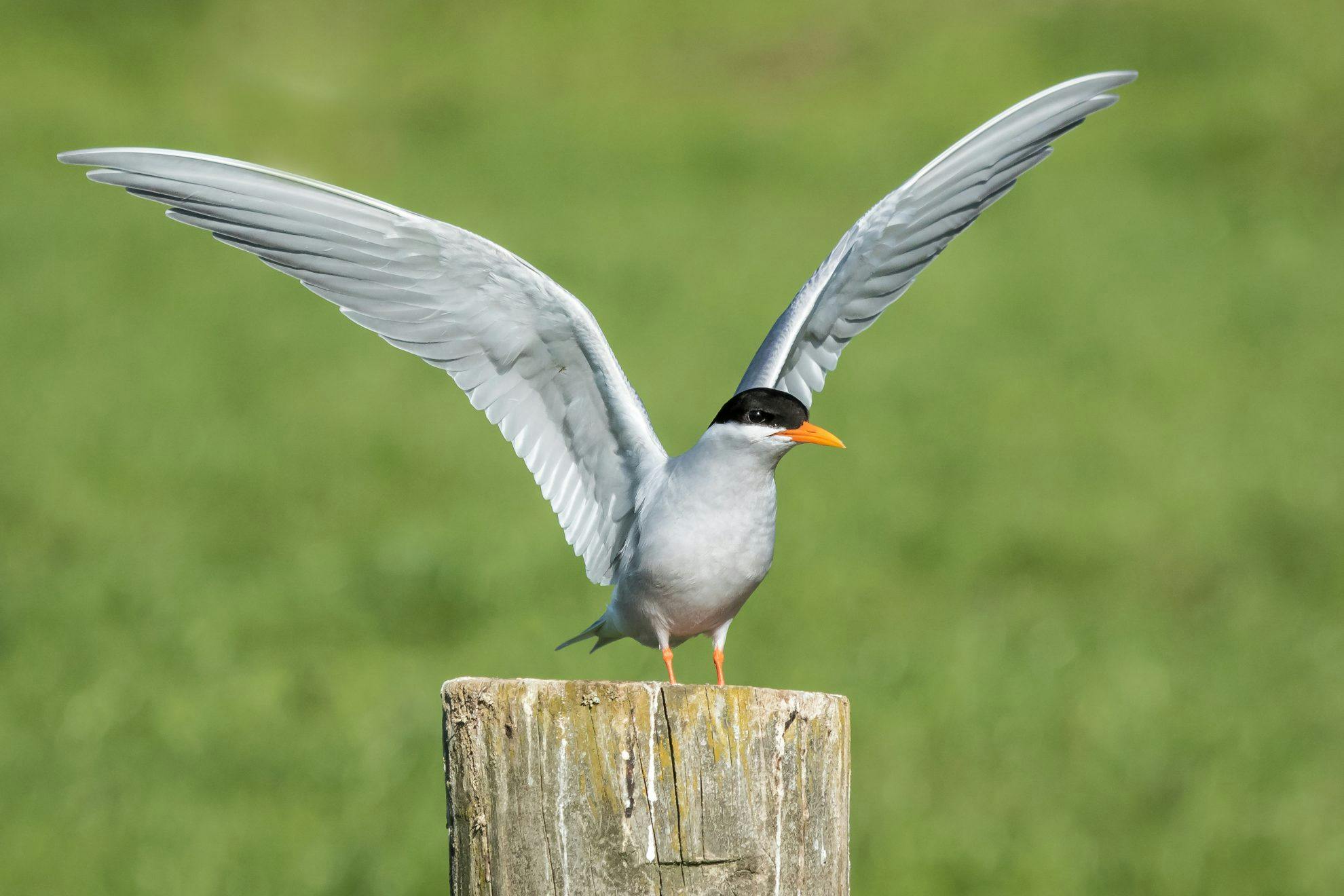An attractive bird best seen in the South Island’s braided rivers
The black-fronted tern (tarapirohe) breeds only in the braided rivers of the eastern and southern South Island. But once the breeding season is finished, they disperse widely to coastal areas of sheltered bays, estuaries and lagoons.
Features
While breeding, the tarapirohe has a distinctive black ‘cap’ and orange bill. Outside the breeding season, the black cap turns to a mottled grey and a black tip forms on the bill. A black patch also appears around the eyes and ears. Juvenile birds look similar to non-breeding adults, but the crown and back of the neck are more mottled and the bill is a dark brown with only a slight dull orange colour at the base. It is about 28cm long and weighs around 95g.
Conservation status
Endemic, ‘nationally endangered’.
Call
The usual call is a repetitive ‘kit-kit’. They can be particularly noisy at breeding colonies, especially when dive-bombing intruders.
Diet
During the breeding season, black-fronted terns feed on hatching nymphs of mayflies and stoneflies, or small fish. They also venture into areas outside the river such as fields or river flats to feed on earthworms, grass grub larvae and skinks. After breeding, when most birds move to the coastal areas, they will feed in open water up to 50km from shore, taking mostly planktonic crustaceans. At this time of year, especially during stormy weather, they will also feed on earthworms found on wet pasture land.
Nesting
Tarapirohe breed in colonies ranging in size from two to 50 pairs from October to January and will return to the same river each year to nest. Nests are usually sited well away from each other and placed on shingle strips in open braided river beds. The nests are very simple scrapes in the sand or amongst river stones, lined with a sparse covering of fine twigs. All incubation, rearing and feeding duties are shared by both parents until the young are six weeks old.
Bird spotting tip
During the summer months, when they are nesting in the braided river beds, they can be easily located by the concentration of numbers. They can be observed quite closely at this time as they go about their business of nest building and chick rearing.
Feathery fact
When feeding in rivers, black-fronted terns obtain food by ‘contact-dipping’ (dipping the tip of their bill only onto the surface) to take emerging nymph mayflies and stoneflies. They may also use the ‘plunge diving’ method to take small fish under the water.








